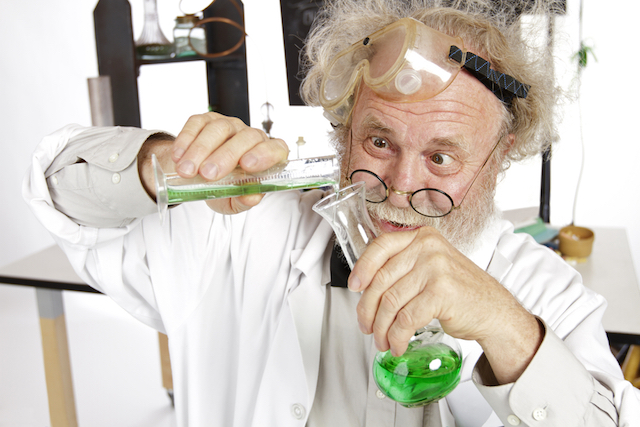
Written by Jan Wellmann
The 20th century medical revolution messed up in at least one regard: bacteria
Instead of wiping out disease, it created a new generation of antibiotic resistant bacteria that cannot be treated. Some doctors talk about the return to the Middle Ages while others barely acknowledge the threat. The real problem stems from how we perceived bacteria from the onset.
To be human is to be bacteria. We’re built out of 100 trillion tiny creatures, 90 trillion of them are bacterial, while the rest are human cells.
A thousand species of bacteria live in our gut, aiding with digestion, warding off pathogens, maintaining the immune system, synthesizing vitamins, decomposing fecal matter, creating enzymes, harnessing energy from carbohydrates, absorbing fatty acids, and producing hormones. Thousands more perform vital functions on our skin, in our lungs, mouth, hair, organs, blood, and genitalia.
Useful little critters. It’s a shame we declared war on them soon after their discovery.
Confusing the enemy
“All the water . . . seemed to be alive,” observed Dutch scientist Anton Van Leeuwenhoek when he first pointed a microscope on a sample of human plaque in 1683. At first the little critters didn’t seem to represent a threat—they were just everywhere.
Leeuwenhoek’s successor called microbes “worms” and proposed they could transfer disease. “Worms” metamorphosed into “germs,” as the hunt for pathogenic bacteria accelerated.
By the late 1800s, scientists had isolated Black Death, cholera, chlamydia, and a handful of other notorious infectious diseases; and bugs were in for a century of prejudice.
During the early antimicrobial revolution, the chemical industry introduced disinfectants for our home, antiseptics for our skin, and pesticides for our agriculture. Meanwhile, the medical industry introduced us to synthetic drugs.
The first early 20th century vaccines saved hundreds of millions of lives and brought small pox, diphtheria, tetanus, yellow fever, whooping cough, polio, and measles under control. Vaccines were able to stimulate the body’s immune system against disease, not cure it.
If we could intervene in the antagonism between bacteria, it would offer perhaps the greatest hopes for therapeutics,” Louis Pasteur wrote in 1876, expressing the idea of antibiosis (latin for “against life”): the promise for the next generation weaponry against bugs.
“Antibiosis” means the ability to harness one microbe’s defenses against another. It was a big leap from Pasteur’s previous idea of pasteurization, which uses heat to zap bacteria (to conserve consumables). Yet once Pasteur and Robert Koch demonstrated that an airborne bug could inhibit anthrax, scientists began to pursue antagonistic, targetable microbes with a vengeance.
Penicillin
When Alexander Fleming accidentally left his petri dish of staphylococci (common respiratory and skin bacterium in humans) exposed to a penicillin mold in 1928, he witnessed a halo of dead staph bacteria—a signal to the future of antibiotics.
Penicillin works by preventing enzymes in bacteria from forming new cell walls. Back then, the spectrum of opportunity was limitless. Tuberculosis, step, staph, typhoid, ulcers, abscesses, food poisonings, surgeries…
Mass production of penicillin began just in time for WWII, where it quickly gained lifesaver reputation by dramatically reducing casualties from wounds and amputations. US pharmaceutical giants Merck, Squibb, Pfizer, and Abbot grew production from 21 billion units in 1943 to 6.8 trillion units in 1945.
The “sulfa craze”
Meanwhile, Bayer stumbled on a synthesized dye that was able to cure strep in mice, which they patented without further ado as Prontosil in 1932. The active compound was later identified as sulfanilamide, a 1906 dye industry chemical with an expired patent. This began a “sulfa craze,” with hundreds of manufacturers producing tens of thousands of tons of sulfa as the new miracle panacea. Even American first-aid kits instructed soldiers to sprinkle sulfa on “any open wound.”
Hundreds of antibiotics followed suit over the next half a century, targeting an increasingly common variety of ailments. Bronchitis. Pneumonia. Diarrhea. Sore throat.
False promises
The medical revolution saved millions of lives—but triggered a microbial blowback.
By developing smart weapons against pathogens we accelerated their evolution over and beyond any other bacterial species. We are responsible for activating a rare breed of hostiles.
Bacteria can mutate thousands of times a day to lock in a resistant gene. Only a few of them have to survive and replicate to make their species resistant to a drug—a drug that took about a decade for our best minds to develop.
Drug-resistant bacteria
 The first drug-resistant bacteria surfaced in the early 1950s. Fleming himself had warned about drug resistance in his 1945 Nobel lecture.
The first drug-resistant bacteria surfaced in the early 1950s. Fleming himself had warned about drug resistance in his 1945 Nobel lecture.
“The time may come when penicillin can be bought by anyone in the shops. Then there is the danger that the ignorant man may easily underdose himself and by exposing his microbes to non-lethal quantities of the drug make them resistant. Here is a hypothetical illustration. Mr. X. has a sore throat. He buys some penicillin and gives himself, not enough to kill the streptococci but enough to educate them to resist penicillin. He then infects his wife. Mrs. X gets pneumonia and is treated with penicillin. As the stretococci are now resistant to penicillin the treatment fails. Mrs. X dies.”
George Orwell is a case in point. While finishing his book 1984, Orwell developed an early antibiotic-resistant mutation of M. Tuberculosis in response to repeated prescriptions of Streptomycin. Soon after, he died from lung hemorrhage.
Superbugs didn’t receive much publicity until end of the century, when rampant hospital infections began to be routine. By then, millions of metric tons of antibiotics were routinely fed to both humans and livestock every year. Drug resistance didn’t deter the health care industry from issuing prescriptions at an ever faster rate.
What’s happening today with bacteria…
In 2010, doctors prescribed 258 million courses of antibiotics for a population of 309 million people. The biggest visible impact has been in the number of superbug infections, 80 percent of which take place in a health care setting.
The CDC records up to 1.7 million hospital infections per year, out of which at least 20 percent evolve into superbugs. One of the nastiest of these superbugs is the MRSA. Methicillin-resistant Staphylococcus aureuscan cause widespread infection in vital organs, toxic shock syndrome, before finishing you off with flesh-eating pneumonia.
Two billion people carry staph naturally on their skin, nose or respiratory tract. It can only cause an infection if it enters a wound and the patient has a weak immune system. But because of its wide propagation, its hostile form spreads fast.
Out of 500,000 staph infections in U.S. today, 100,000 today evolve into MRSA, of which at least 20,000 become fatal. The figure is growing fast, one reason being the recommended protocol: more antibiotics.
MRSA today also resides in our livestock—for an obvious reason. Over 63,000 tons of antibiotics (more than the weight of theTitanic) were used in animal husbandry in 2010 alone, or over 80 percent of total consumption. As a result, a 2011 study reported that up to 24 percent of the meat and poultry sold in U.S. grocery stores contained MRSA strains.
Food borne superbugs such as Salmonella and Escheria Coli have also jumped from livestock to humans. The drug-resistant strains of E. coli, for example, which causes urinary tract infections in women, can be traced back to antibiotics in chicken.
Gonorrhea and chlamydia have also developed resistance. Tuberculosis has evolved into a multi-resistant strain.
Fast paced superbugs
The pace of proliferation isn’t slowing down. China, Brazil, India, Russia and South Africa are looking at a 100 percent increase in antibiotic consumption by 2030. Antibiotics can be found in 75 percent of liquid soaps, in Band-Aids, cleaners, and topical OTC ointments like Neosporin (also linked to MRSA).
Distribution is also heavily subsidized. Seventeen thousand doctors received $250 million in sales commissions in 2010 from seven pharmaceutical companies alone. A 2013 survey found that doctors prescribe antibiotics two thirds of patients who have symptoms of viral infections like sore throat or bronchitis (with antibiotics that don’t cure viral infections).
By 2050, 10 million people per year could die from antimicrobial resistance, according to KPMG and RAND Europe.
Somewhere along the line, industry profit hijacked the Hipocratic Oath—and rigged the game.
It takes a decade to develop a new antibiotic, and five seconds for a staph bacterium to mutate.
Back to year zero
“We may look back at the antibiotic era as just a passing phase in the history of medicine, an era when a great natural resource was squandered, and the bugs proved smarter than the scientists” – Cannon G. 1995
Today’s microbiologists acknowledge the human body as a microbiome—a bacterial cloud living inside another—in which the diversity of species is a sign of health. You can’t just attack one part of the dome without expecting a counterstrike.
A Hunter-Gatherer tribe in the Amazon, for example, has a particularly rich microbiome and a natural resistance to disease, without the use of antibiotics. Progressive doctors are shifting focus to bacterial versatility (e.g. fecal transplants) in treating disease.
We should be working with good bacteria not against it. But the meds from the “Us Vs. Bugs” era can still be found in our medicine cabinet, diet, and personal care products.